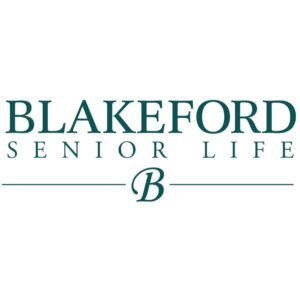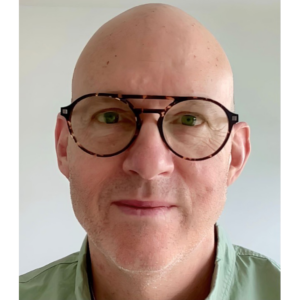Technology can improve housekeeping practices
With the exponential realities of airborne and contact illnesses in the long-term care setting, exacerbated by ever-worsening drug resistance to them, industry is coming up with innovative technology to combat pervasive bugs. Here are just a handful of high-tech devices available in today’s disinfecting market.
UV light disinfection systems
Perhaps the most promising of all infection-busting technology are machines that deliver ultraviolet (UV) C light for disinfection. UV radiation is part of the electromagnetic (light) spectrum that travels from the sun to earth. It has wavelengths shorter than visible light and classified as UVA, UVB or UVC. Several companies are producing these machines. Here’s a look at what three manufacturers have accomplished.
Xenex, San Antonio, Texas, has given its entry into the field a provocative name: the Germ-Zapping Robot. Although the device has a humorous appellation, it has yielded some serious results:
- 57 percent reduction in Methicillin-resistant Staphylococcus aureus (MRSA) rates at Moses Cone Behavioral Health Hospital in Greensboro, N.C.
- 53 percent reduction in Clostridium difficile (C. diff) rates at Cooley Dickinson Hospital in North Hampton, Mass.
- 20 percent percent reduction in C. diff and multidrug-resistant organism infections at Westchester Medical Center in Valhalla, N.Y.
The device is “25,000 times brighter than sunlight and soaks an entire room in super-intense ultraviolet light,” according to Xenex Science Director Sarah Simmons, MPH.
The results of a third-party study conducted on the Clorox Healthcare Optimum-UV system were delivered at the 2013 Association of Professionals in Infection Control and Epidemiology annual meeting. The study shows that the system was able to eliminate nearly all of C. diff spores in five minutes at a distance of eight feet and nearly all MRSA microbes in two minutes at eight feet.
Steriliz manufactures the R-D Rapid Disinfector, designed to reduce infection risk for residents, visitors and staff. The company reports a drop in non-reimbursable costs associated with healthcare-associated infections. The system delivers metered doses of UVC, records the data and reports the data online in real time using built-in infection tracking software.
Wheelchairs, bedframes and more
The Morantz Ultrasonic Cleaning System underwent independent laboratory testing and passed with flying colors. In addition to wheelchairs and bed frames, other pieces of equipment that were contaminated and then cleaned using the Philadelphia-based company’s system:
- A MRSA-infected walker was disinfected in two minutes;
- A wheelchair doused with Enterococcus and Escherichia coli was decontaminated in three minutes; and
- A computer keyboard (similar to those used by facility nurses) was also infected with Enterococcus and E. coli and sanitized in seven minutes.
Automatic bedpan washers
Several manufacturers produce automatic bedpan washers in a choice of configurations including front- and top-loading models, those with manual and automatic doors and those with counters that come with or without a sink. All work on the same general principle:
- The operator has no contact with the contents of the receptacle.
- He or she slips the pan or urinal into the machine, which is plugged directly into the sewer lines.
- All washing and disinfecting takes place behind the closed door that locks while in use.
Other optional safety features include a no-touch infrared switch or a foot pedal.
Depending on the machine, bedpans, urinals and emesis basins can be washed simultaneously.
The un-mop system
A mop and a bucket are the go-to team for cleaning bathroom floors, but “mops are perfect for painting floors with soils and contaminants,” says the website of Kaivac, a Hamilton, Ohio-based manufacturer of cleaning systems. Contaminants found in public bathrooms can spread throughout an entire building. The company is just one that has devised a sanitation cleaning system that washes every hidden inch of the restroom—including the tiny crevices of the fixtures—while protecting the person using the cleaner.
Its No-Touch Cleaning system is a combination low-pressure sprayer/high-power vacuum cleaner. The system uses a special foam that remains on the fixture just long enough to lift out bacteria. The operator simply points the fan sprayer at the floors and fixtures, and washes away filth and bacteria. Then the vacuum attachment sucks up the water and debris.
Laundry disinfection
According to a Jan. 25, 2013, Centers for Medicare & Medicaid Services (CMS) memo (PDF) from the Center for Clinical Standards and Quality/Survey & Certification Group, “Hot water washing at temperatures greater than 160° F for 25 minutes and low temperature washing at 71° to 77° F with a 125-part-per-million (ppm) chlorine bleach rinse, remain effective ways to process laundry.” That memo also states: “The CMS in collaboration with the Centers for Disease Control & Prevention (CDC) has determined that ozone cleaning systems are acceptable methods of processing laundry.”
Ozone is a natural sanitizer and the system has been all but approved by CMS and the CDC in the memo to help battle MRSA and C. diff. And if that weren’t enough, FacilityManagement.com states that ozone laundering is effective in cold water, resulting in significant savings on hot water energy.
Chemical management systems
Members of facility housekeeping staff use an array of cleaning solutions on a daily basis. If these solutions are not diluted properly, problems will arise. Too much of a sanitizing chemical, for example, can put housekeeping personnel at risk of injury. If too little sanitizer is used, residents can be subjected to inadequate protection against bacteria.
A good resolution to this problem is a chemical management system. Betco, Toledo, Ohio, is just one company that produces such systems. The Betco system is twofold: a dispensing unit and a specially designed chemical bottle. The company’s wall-mounted system measures the correct amount of solution—and the correct solution, for that matter—then dispenses it into the bottles, each equipped with built-in metering inserts that continually maintain accurate dilution. So in addition to protecting cleaning staff and residents, it reduces costs. Dispensing units come in a variety of sizes and capabilities. To further ensure safety and compliance with the system, the company has produced task cards and wall charts for the housekeeping staff’s use.
Low tech can yield high performance
With all the high-tech options available, low-tech alternatives remain as well.
One such innovation is the SmartTowel by Kaivac. This microfiber cleaning cloth is segmented into quadrants. On one side, the quads are numbered one through four. On the flipside, the quads are numbered five through eight. Instead of wadding up a cloth to clean, risking cross-contamination, the user simply folds the towel into four and systematically cleans and refolds to a fresh quad. And to further prevent cross-contamination, Kaivac makes the SmartTowel in four colors—blue, green, red and yellow—for use in different areas.
Tobi Schwartz-Cassell is a freelance writer based in Cherry Hill, N.J.
See Long-Term Living's Buyers Guide for more information on products and technology.
Related Articles
Topics: Articles , Operations











